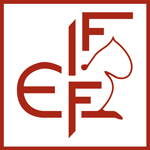Introduction
The Turkish Angora (Turkish: Ankara kedisi, ‘Ankara cat’) is a semi-longhaired breed. Turkish Angoras are one of the ancient, natural breeds of cat, having originated in central Anatolia (Ankara province in modern-day Turkey).
History
Like all domestic cats, Turkish Angoras descended from the African wildcat (Felis lybica). Longhaired cats were imported to Britain and France from Asia Minor, Persia and Russia as early as the late 16th century. There is a strong connection between Angoras and Persians: the Persian was developed from Turkish Angora by British and American cat breeders. Although at first only white Turkish Angoras were recognised, nowadays the breed is accepted in many colours and patterns. The breed is recognised by FIFe since 1988.
Appearance
With a long, but well muscled body, the Turkish Angora is the “ballerina” of the cat fancy. They are very well proportioned in all aspects, graceful and lithe giving the impression of grace and flowing motion. On a slender and graceful neck they carry a wedge shaped head, wide at the top, tapering slightly towards the chin. The ears are large, pointed and set high on the head and close to each other giving special feeling of the bread. Large, almond shaped eyes are vivid and expressive. Single coat of medium length is long at the frill and tail. The coat is silky and sleek and hair is very fine and shows a silk-like sheen.
Temperament
Turkish Angoras are playful, intelligent, athletic and involved. They bond with humans, but often select a particular member of a family to be their constant companion, whom they are very protective of. They seek to be “helpful” in any way they can with their humans, and their intelligence can be at times remarkable, showing basic problem solving skills. Turkish Angoras are energetic, and often seek out “high ground” to observe activity of the home. Some ride on their owners’ shoulders. Most get along well in homes with other animals or children, or homes with high activity.
Breed Standard
Last modification of the Standard: 2024
